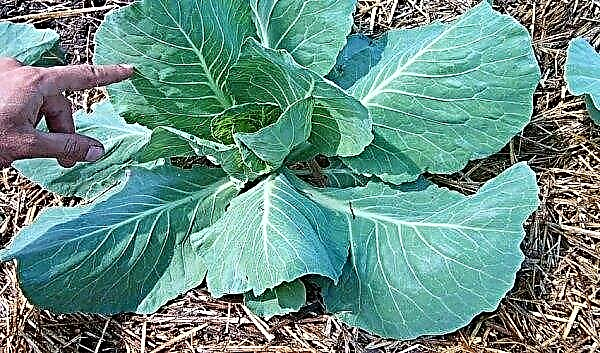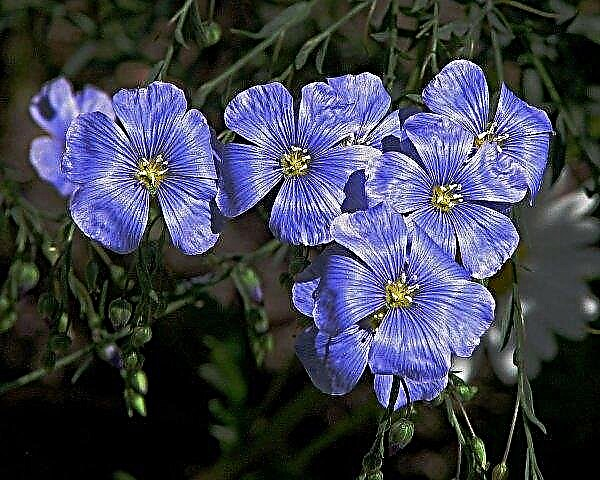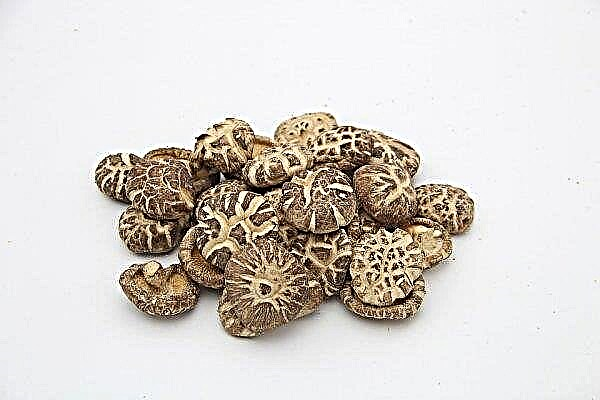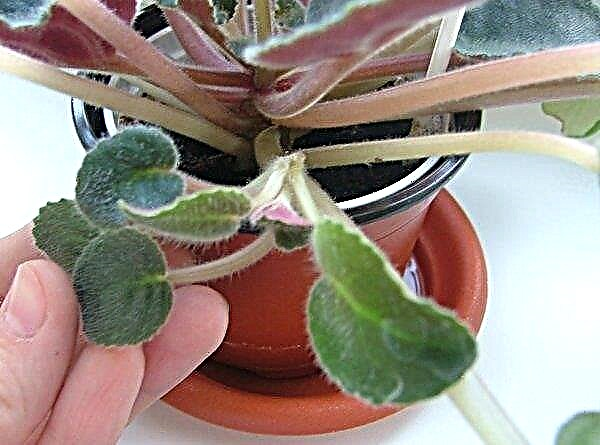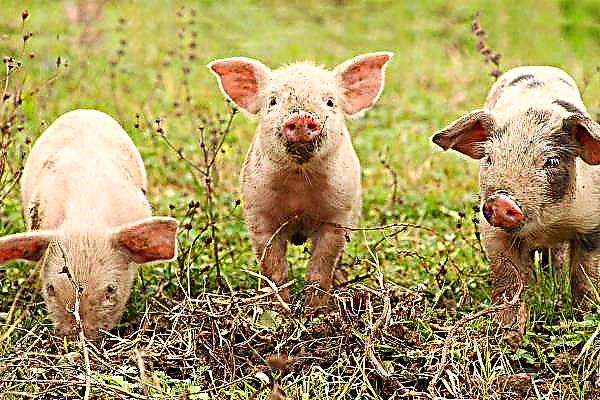Tulip Mystic Van Eyck gained wide popularity in Russia due to its unpretentiousness and incredibly beautiful, long-lasting flowering. Description, care rules and features of the cultivation of this variety - further in the article.
Grade description
Van Eyck belongs to the classic varieties of tulips, bred in 1995. It is traditionally classified as Darwin hybrids due to the following characteristics:
- high growth (reach 45-50 cm);
- large flowers in the form of a glass;
- the shape is close to a rectangle;
- Great for unexpected forcing and shearing.
The most famous varieties of this group include Parade, Apeldoorn, Oxford.
Did you know? The Netherlands exports over 3 billion tulips every year.
In diameter, the flower reaches 8-10 cm. The variety is characterized by fairly early flowering - if abnormal weather conditions are not observed, then in late April - early May, the tulip begins to bloom.
In a hybrid way, several plant species with a changed color, transmitted in the process of reproduction, were obtained. These include rare pastel colors such as orange, pink, light red. Mystic Van Eyck is considered one of the most common varieties of this variety.. It is distinguished by petals with pale pink tips and a lighter back, sometimes with a lilac undertones, all together form a magnificent glass.
Growing Features
The plant likes to be in a lighted, but sheltered from the wind place. However, the flower perfectly survives both in partial shade and in complete shade. Tulip Mystic Van Eyck grows on almost any soil, but most fully manifests itself when grown in soil with a large admixture of sand or clay, as well as light, fertile. The tulip is difficult to stand stagnation of moisture and dampness, so you should not plant it in wetlands.
Landing rules
It is necessary to plant in the fall, at the end of September - October, the procedure is carried out as follows:
- In the selected place, you need to dig holes or trenches with a depth of 10-12 cm.
- In the resulting holes, plant the bulbs and lightly sprinkle them with soil.
- Water the soil, and then superficially cover the soil with mulch (in this case peat) to protect and improve properties.
 Keep your distance while landing. Between large bulbs it should be at least 10–15 cm, between small ones 5–8 cm is enough
Keep your distance while landing. Between large bulbs it should be at least 10–15 cm, between small ones 5–8 cm is enough
Often bulbs are planted in rows of 20–25 cm wide. If you do not have peat, you can replace it with a copious layer of dry leaves. If planting is carried out in the northern regions, it is recommended to additionally cover the bed with lapnik.
The subtleties of care
The plant is unpretentious to conditions, does not require special care. You need to periodically water it moderately, weed and loosen the soil. For flowering to be long and uniform, it is recommended to feed the flowers 3-4 times during active growth.
Important! Every 4–5 years, it is necessary to transplant the plant to a new place once.
Every year after the end of the growing season it is dug up - This technique allows you to maintain varietal characteristics for several years, getting high-quality and strong material for reproduction. No winter shelter required.
Video: How to dig and store tulips
Pests and diseases
Tulip itself is not prone to diseasebut as a preventative measure, it is treated before planting with fungicides or a 0.5% solution of potassium permanganate, which minimize the ingress of fungus and kill fungal spores.
In early spring, you can verify the presence of the disease: if the bulb has not sprouted, then most likely it is infected. To prevent the disease from spreading to other flowers, you need to dig it up and neutralize it. Tulips of the Mystic Van Eyck variety are characterized by the presence of immunity to the variegated virus, which the lilac, fringed and parrot varieties cannot boast of.
Did you know? In the history of Holland there was a period of time nicknamed tulipomania. This is the 30s of the XYII century, in those years the cost of these flowers was ten times higher than the earnings of the worker.
Tulip in landscaping
Due to the not-so-fast growth rate, tulips of this variety are used in many fields: for landscaping and decorating flower beds, borders, decorating plots, in various compositional bouquets, for decorating balconies, as well as under trees and in the alpine garden. This variety will look great on a flower bed with white daffodils and pink scilla.

Getting a timely and, most importantly, the right care from attentive gardeners, the Mystic Van Eyck tulip will prove itself in the best possible light, delighting the views for many years in a row.

